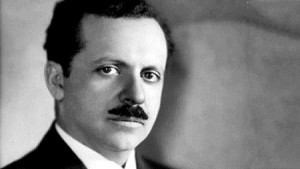Formation of Political Machines
April 20, 2016‘The conscious and intelligent manipulation of the organized habits and opinions of the masses is an important element in democratic society. Those who manipulate this unseen mechanism of society constitute an invisible government which is the true ruling power of our country.
We are governed, our minds are molded, our tastes formed, our ideas suggested, largely by men we have never heard of. This is a logical result of the way in which our democratic society is organized.’
– Edward Bernays
http://www.informationliberation.com/?id=8339
“Adam Curtis’ acclaimed series examines the rise of the all-consuming self against the backdrop of the Freud dynasty.
To many in both politics and business, the triumph of the self is the ultimate expression of democracy, where power has finally moved to the people. Certainly the people may feel they are in charge, but are they really? The Century of the Self tells the untold and sometimes controversial story of the growth of the mass-consumer society in Britain and the United States. How was the all-consuming self created, by whom, and in whose interests?
The Freud dynasty is at the heart of this compelling social history. Sigmund Freud, founder of psychoanalysis; Edward Bernays, who invented public relations; Anna Freud, Sigmund’s devoted daughter; and present-day PR guru and Sigmund’s great grandson, Matthew Freud.
Sigmund Freud’s work into the bubbling and murky world of the subconscious changed the world. By introducing a technique to probe the unconscious mind, Freud provided useful tools for understanding the secret desires of the masses. Unwittingly, his work served as the precursor to a world full of political spin doctors, marketing moguls, and society’s belief that the pursuit of satisfaction and happiness is man’s ultimate goal.”
The Century of Self
‘…when the breeze caressed their faces, they could feel her touch.’
‘The curtains were blowing in the gentle morning breeze. Looking at the children, Death said quietly, “Cry, Heart, but never break. Let your tears of grief and sadness help begin new life.’
What makes the book particularly touching, thanks to Pardi’s immensely expressive illustration, is just how crestfallen — broken, even — Death himself looks the entire time he is executing his mission, choked up with some indiscernible fusion of resignation and recompense.
[…]
To stall the inevitable, the children devise a plan — believing that Death only works at night, they decide to keep refilling his coffee cup until dawn comes, at which point he would have to leave without their grandmother. Here, too, one is struck by the ordinariness of Death, for what can be more ordinary — and life-loving, even — than to enjoy a cup of coffee at the kitchen table?
‘Some people say Death’s heart is as dead and black as a piece of coal, but that is not true. Beneath his inky cloak, Death’s heart is as red as the most beautiful sunset and beats with a great love of life.’
Maria Papova
Brainpickings
Cry, Heart, But Never Break: A Remarkable Illustrated Meditation on Loss and Life

